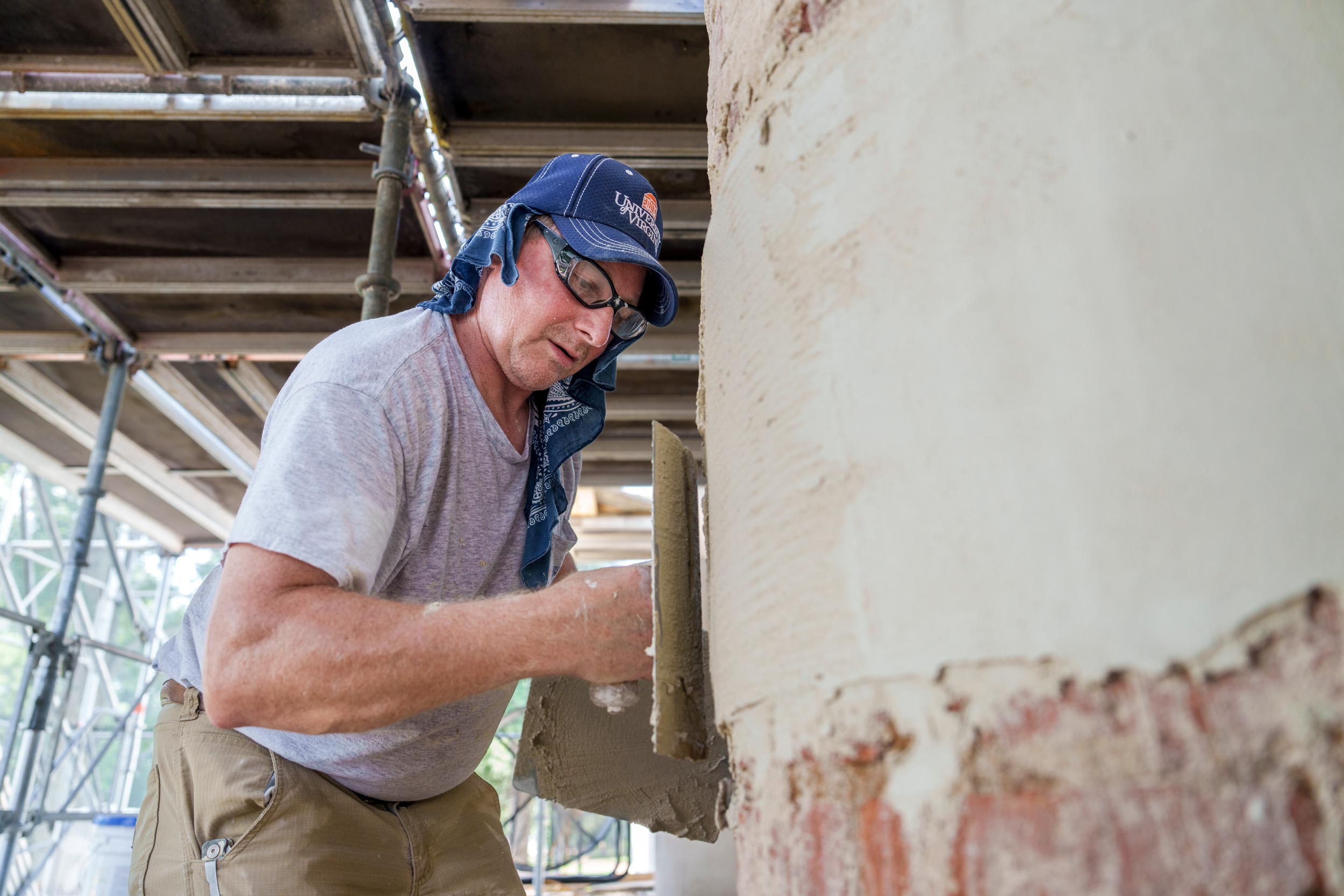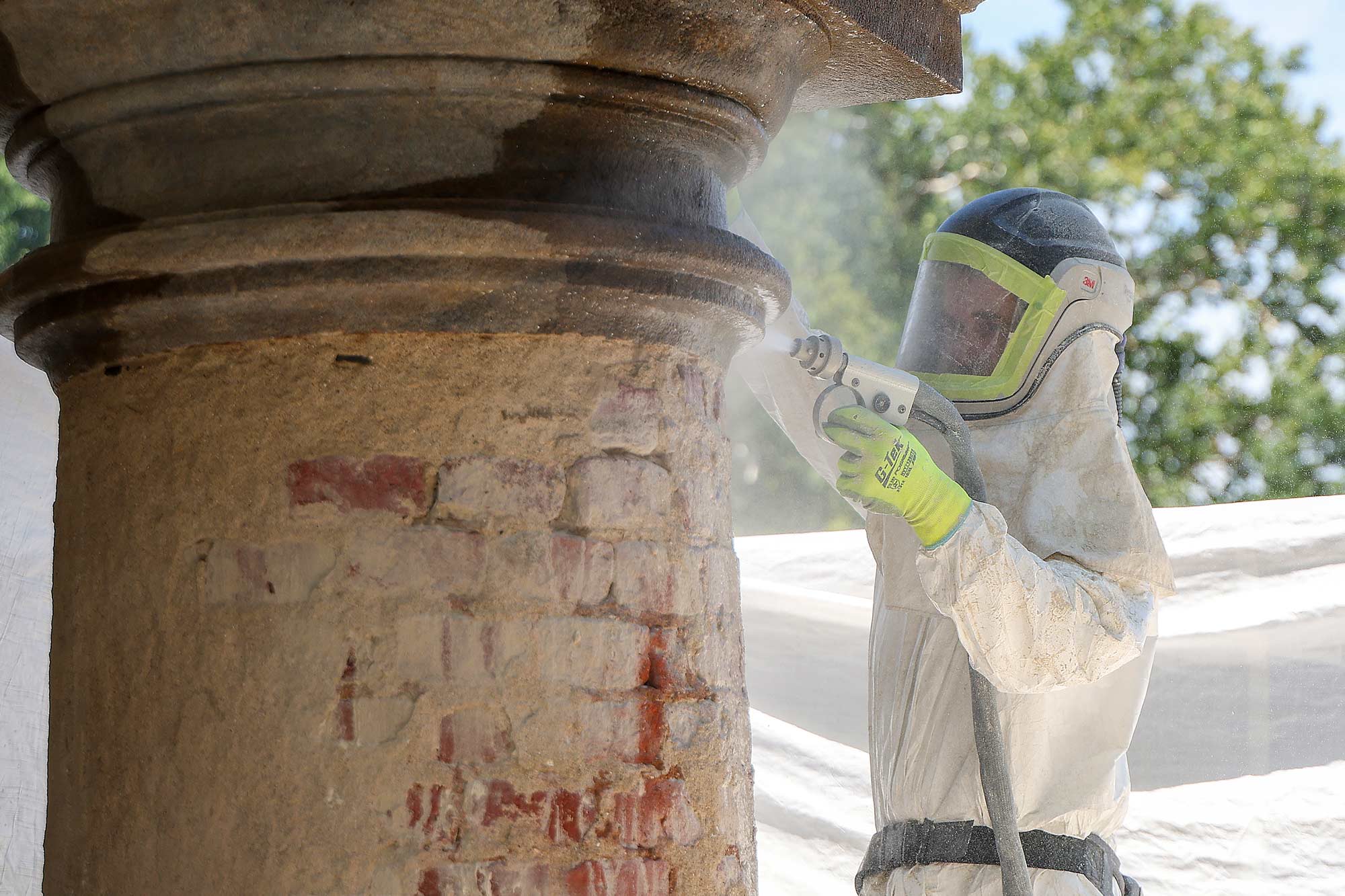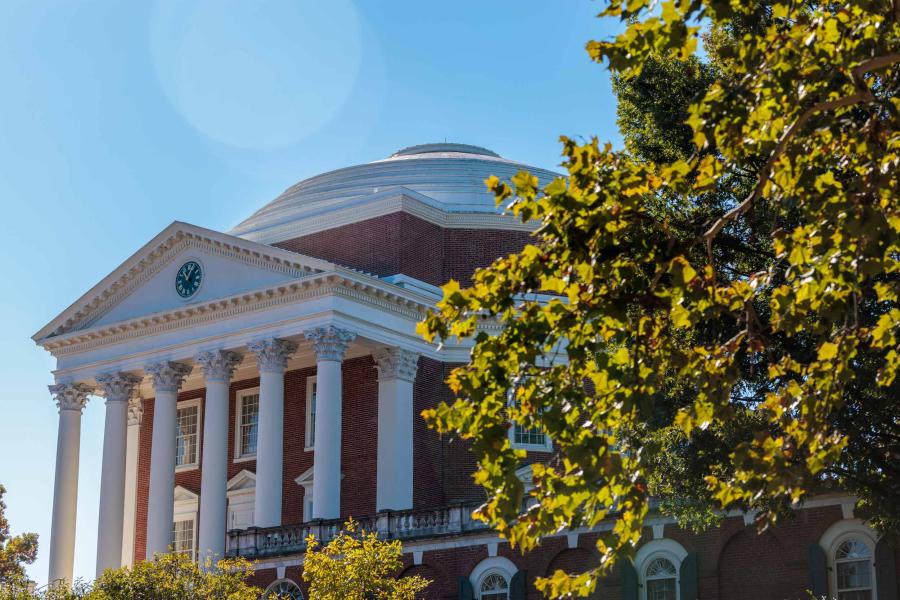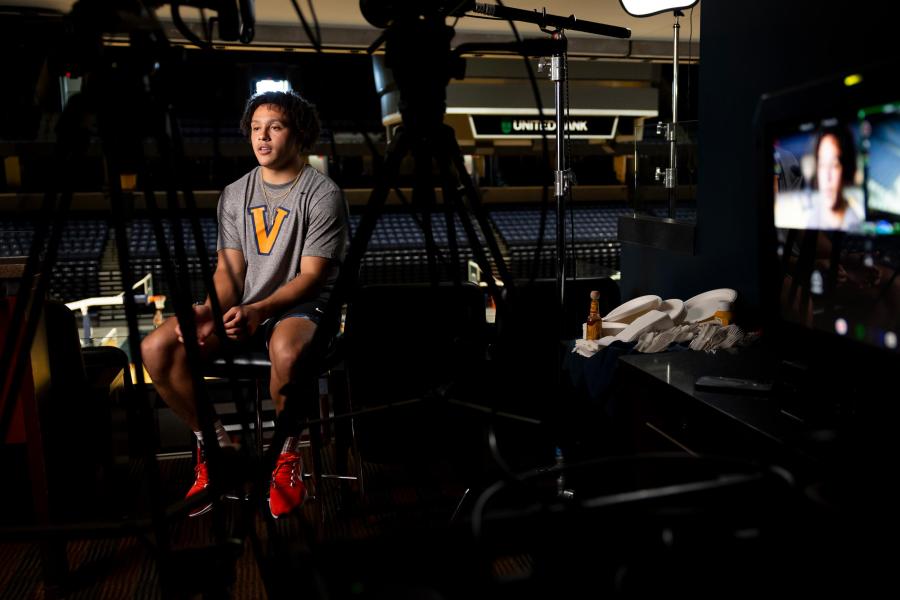Historic masons are going back in time at Pavilion I in the University of Virginia’s Academical Village.
They have carefully stripped away layers of cement that have been slathered onto the historic columns over the years, exposing some of the original Jeffersonian brick.
When first built, the brick-cored columns were covered with a sand/lime mixture. However, over the years, as some of the lime render failed, subsequent generations of masons switched to cement as an outer covering for the columns.
That move proved to be to their detriment.
“The cement has about zero breathability,” historic mason supervisor Matt Proffitt said. “At the time it was introduced, it was the latest, greatest thing that could happen for masonry. It was harder, it was durable, but nobody knew what it would do to the original mortars.”
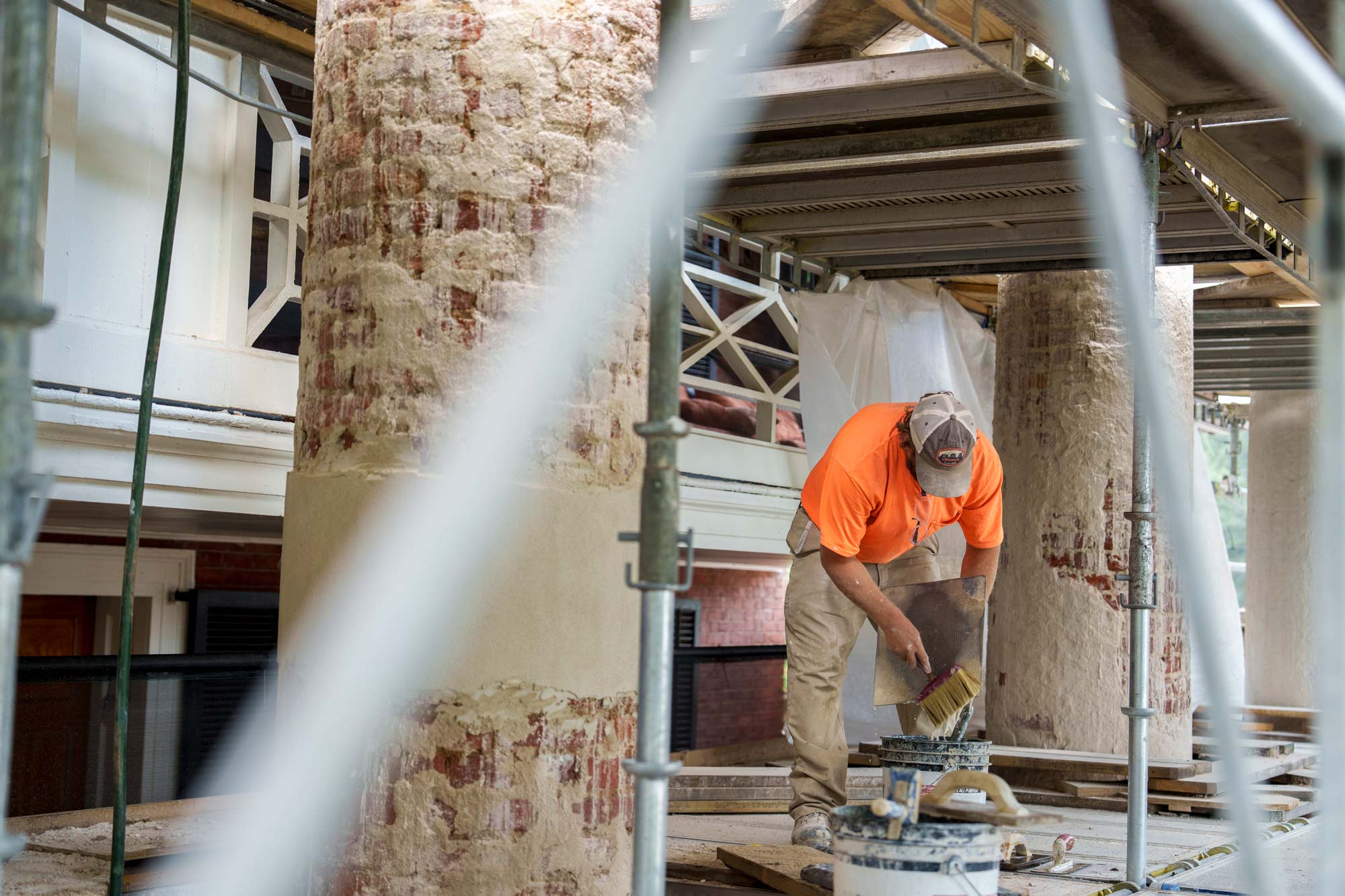
Historic mason Robby Kolb cleans his tools after applying lime render to a column. (Photo by Lathan Goumas, University Communications)
The cement was hard. The less strong lime render, however, breathed, allowing moisture to escape from the columns’ interiors. Now that moisture was trapped.
“The lime prohibits mold growth,” Proffit said, but “the cement traps the moisture in the column, and the moisture keeps working and keeps deteriorating the lime mortar between the bricks.”
Proffitt said the bricks themselves have not been damaged, though some of the mortar between them had deteriorated.
“A little bit of the original render is very brittle,” Proffitt said. “A lot of it has delaminated from the brick, and to save that, we’ll make a lime mixture in a sprayer and try to drive it into the old render. Hopefully, it will get in there and reactivate that old lime mortar and make it actually adhere back to the brick.”
